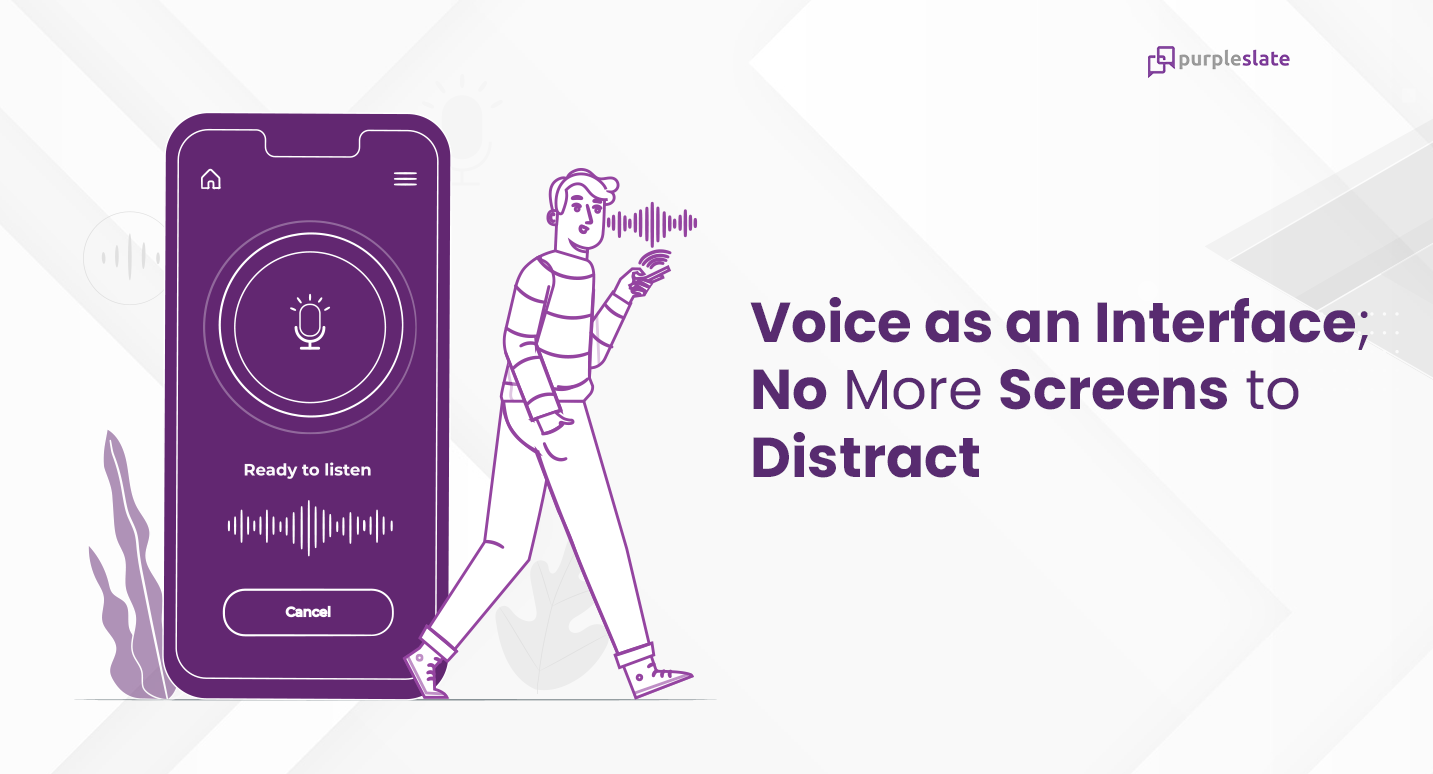
Introduction
Remember the good old days of using Command Prompt? You type commands and syntaxes and magic happens! Over the last three decades, the way we interact with computers has rapidly evolved, and technology has come a long way from command prompt, point & click interface, touch screen interface to present day’s voice interface.
With the advent of voice assistants like Alexa and Siri, voice AI technology has penetrated almost every household and has become an integral part of our personal lives. With this mass adoption of AI assistants, the focus now is driven toward voice AI solutions in transforming the way businesses operate.
What is Voice AI?
Voice AI is a part of conversational AI that interprets and responds to voice inputs. With this technology, devices can interpret directives and react to humans in natural language.
According to a study by Pew Research Center, around 55% of AI users prefer using applications that offer voice interface as they provide hands-free operation of devices. With the current trend of massive adoption, the Voice AI market is expected to grow up to USD 24 billion by 2024.
Voice AI for Businesses
Most Voice AI assistants like Alexa, Siri, and Google Assistant serve our everyday needs like creating grocery lists, playing music, reading audiobooks, and more. Similarly, in the business context, voice AI assistants have multiple use cases and can prove to be an excellent economic tool where businesses can deploy it, improve productivity in the workplace, cut costs, and more.
With the help of voice AI technology, customers today can interact with businesses in a fast, convenient, and hands-free manner across multiple platforms. Voice AI assistants have next-gen capabilities that can help consumers place orders, compare products and services, resolve queries in no time, and ensure they don’t get lost in a sea of unrelated suggestions.
Apart from offering better CX, voice AI solutions can help solve constraints in business processes by seamlessly integrating with in-house databases and providing data-driven responses through voice. From manufacturing to healthcare, voice AI, with the help of Natural Language Processing (NLP), enables frontline employees to complete workflows and capture observations in real time. Conversational voice AI can be trained on abbreviations, acronyms, and jargon specific to an industry. This, in turn, enables voice AI to identify the intent of the user and helps recognize different entities present in the voice input.
For example, when a doctor says ‘Paracetamol 250 mg’, AI can understand 'Paracetamol' is the drug name, '250' is the dosage value, and ‘mg’ as the unit of measurement.
Healthcare
The use cases of voice AI solutions in healthcare are many. Voice AI technology can serve both patients and doctors through instant voice-based interactions. Patients can book appointments, set follow-up reminders, and access their medical records through simple conversations. Furthermore, with its assistance, doctors can instantly access the medical records of patients and get answers to their questions in voice. It can also help them record observations and prescriptions through speech, allowing them to focus on the patient in front of them.
Manufacturing
AI-enabled voice assistants play a significant role in streamlining operations in manufacturing. Voice AI technology can connect to backend manufacturing systems for direct input and retrieval of data instantly. It also helps synchronize operations by easing communications across various departments. With the help of technologies such as Automatic Speech Recognition (ASR), heavy machinery workers can record critical issues and observations, and get instructions without having to remove protective gear. This automation helps the industry to improve production efficiency and ergonomics.
BFSI
According to a study by Gartner, 80% of consumer applications will be developed with a ‘voice-first’ philosophy.
Voice AI assistants can handle processes such as payments, transfers, pay alerts, renewal reminders, and so much more for customers while freeing up customer-service teams to focus on critical issues thus enhancing productivity.
Apart from this, voice AI solutions can convert recorded calls into structured data and analyze them. In a five-minute call between a customer care agent and a consumer, roughly 2000 words are exchanged. With voice assistants, businesses can rapidly analyze call recordings and identify compliance issues, privacy concerns, and other new requirements. This allows businesses to improve customer satisfaction and figure out opportunities for up-selling and cross-selling.
Conclusion
Deloitte surveyed 1,500 senior executives including CXOs and found that roughly 17% understood what Cognitive AI is and what it means for their businesses. But today, the fact that speech recognition has reached an accuracy rate of 95% is proof enough that AI is advancing rapidly.
Some of the obvious ROI gains for businesses from adopting smart AI-enabled assistants include richer data capture, data-driven business intelligence, simplified work management, troubleshooting, and increased access to structured industry knowledge data. As the world moves more and more towards voice AI technologies, it is evident that voice AI is the future of CX and employee experience in various industries and therefore it is important that businesses take advantage of them as quickly as possible to stay ahead of the curve.




